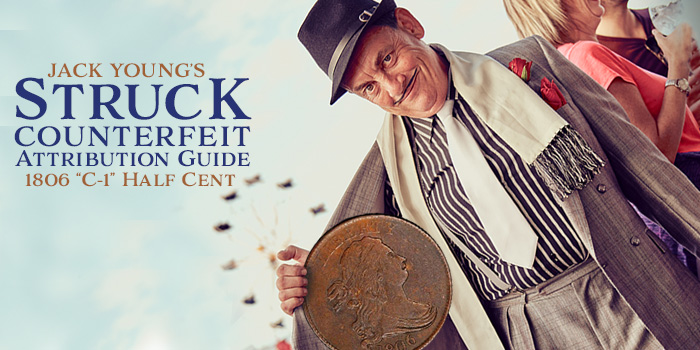
By Jack D. Young, Early American Coppers (EAC) ……
This is the 14th article in the continuing summary of deceptive struck counterfeits documented to date; it is the first in the series reviewing an early half cent, and is one of the three little sisters “variety” documented so far. This is also the earliest example we have found to date, with the first example sold at auction in 2011, and the actual source example for the dies sold in a similar venue in 2013 after the clone! The content and format of this article has been significantly updated from my previous version printed in the January, 2017 publication of EAC’s Penny-Wise.
* * *

Probable Source, 2013 Stacks Bower’s American auction example
This “variety” was first known from a group of suspect early coppers submitted to one of the top TPGs back in the fall of 2015, in the same group that included the 1799 large cent reported in a previous CoinWeek exclusive article and was the second group shared with Early American Coppers (EAC); these now well-documented submissions and the “coins” included are both posted on the EAC Blog tab of the web site. Much of the content on that page is restricted to EAC members (hint: it’s easy to join!), but the two I am referring to are marked “Public View” for anyone interested in reviewing the images.
As previously noted, one of the online selling venues appears to be ground zero for many of the fakes we have been discussing in this series, as we have traced many to listings there and particular sellers. When asked, they have pleaded no knowledge of the “coin” being fake and often take the stand that they are certified by a TPG. Two of the TPGs actively work to flush out these fakes along with EAC, making photos available during research and sometimes during the submission process. Certs have been updated as a result (past slabbed examples), or stopped at the initial certification process–purportedly, common submitters have been identified. I, personally, have a list of “suspicious coins” by seller, gaining as much info on each through the public domain as my limited skills have allowed, and posted it on our focused EAC Facebook “Dark Side” group page.
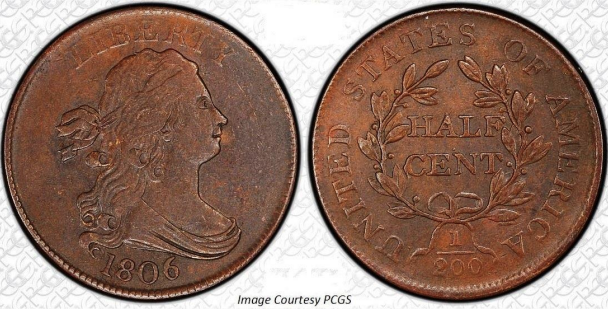
Determined Struck Fake (images courtesy PCGS) example #3
Following up routinely on my list of “connected” sellers resulted in discovering a “suspicious” 1806 C-1 half cent. What’s interesting about this example is that it matched the previously reported “bad” TPG submitted example, which had been returned designated “Code 90/counterfeit“.
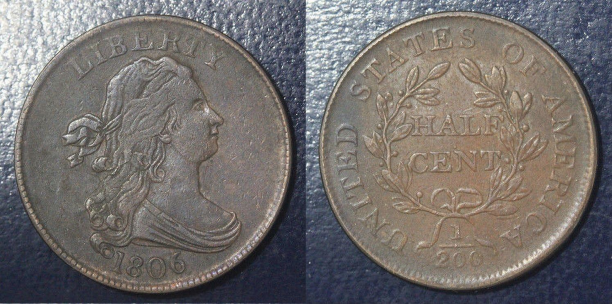
October 2016 Internet example #5 (owned by author)
Until October 2016 we had not found a solid match, although we had a set of grainy images of an example owned by an internet seller in China (reference my article on fake 1795 “S-76b” large cents).

Seller in China example #4
In comparing the images of the October example to both the TPG-submitted and China specimens we see a developing set of clear attribution marks, especially the “ding” on the top of “A” of HALF.

October 2016 Internet example (Left); TPG Submission example (Center); Chinese seller example (Right)

Attribution “Sister Marks”
Continued research resulted in finding another example; this one sold in a 2011 ANA auction, reportedly in a TPG details holder. My initial thought was that this was a possible “source” coin and I posted the pics and write-up on the Dark Side.
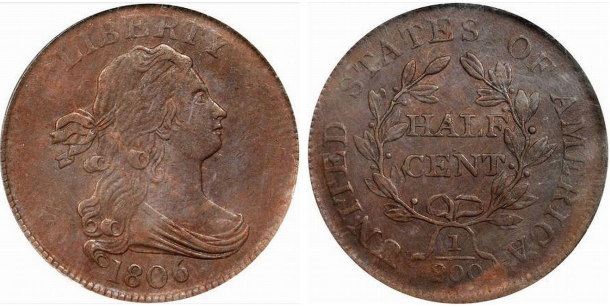
The description reads as follows (pics and text courtesy of Stack’s Bowers) example #1
Lot Description:
1806 Draped Bust Half Cent. C-1, B-3. Rarity-1. Small 6, Stemless. AU-53 Details–Scratched.
“The Small 6, Stemless Wreath Guide Book variety readily identifies the 1806 C-1 die marriage. This otherwise evenly patinated, rose-brown example exhibits a splash of lighter sandy-orange tinting at the lower reverse border in the area of the fraction. Boldly struck, and appearing quite smooth overall, not even the scratch referred to on the TPG insert is readily evident”. Several members participated in discussions regarding the post, with Ed F making a huge contribution to the research as he found the “probable” source coin, an example that was listed in a 2013 Stack’s Bowers auction reportedly in an NGC holder…”
Lot Description:
1806 Draped Bust Half Cent. C-1. Rarity-1. Small 6, Stemless. EF-45 BN (NGC).
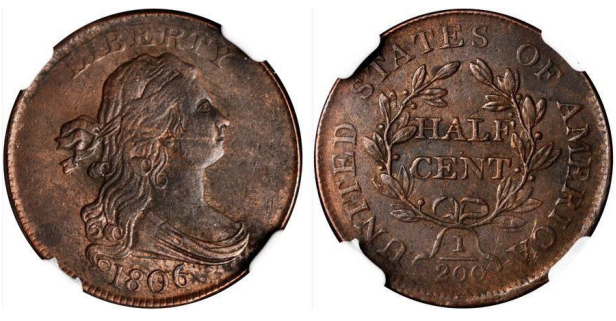
Probable Source Example, 2013 Auction (images courtesy Stack’s Bowers) example #2
Comparison of these two yielded additional common “sister marks”:
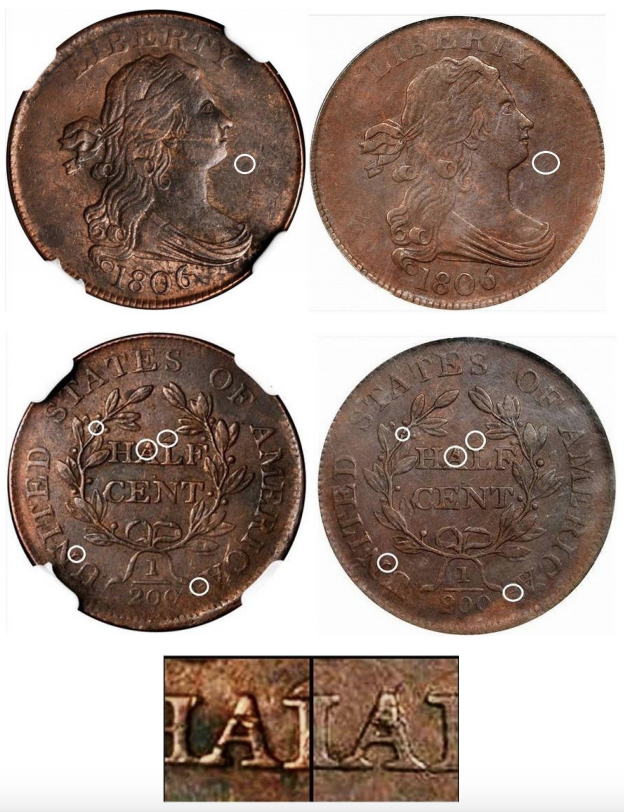
Main sister marks between the source (left) and the first documented clone
The sequence of events is interesting and speculative, but what’s certain is that the example sold in 2011 is earlier in time than we had originally documented for these struck fakes; the earliest 1798 “S-158” went back to 2013 and the same auction as the probable source 1806 C-1. Continued research has not resulted in finding this source example prior to 2013 yet, but it obviously must predate the 2011 “clone”, which makes one wonder when all this actually started.
As noted in previous research articles on this subject, a time-line proved helpful in trying to piece together the history of these – especially with the time lapses between a couple of the examples:
Timeline for the 1806 “C-1” Half Cent:
- August 2011 – Chicago ANA example
- January 2013 Americana Auction – probable source coin
- December 2015 – TPG submission example
- January 2016 – Chinese Internet Seller example
- October 2016 – Internet venue example; author’s first example (now in a TPG holder)
- November 14, 2016 – Second internet venue example (same seller); listing removed
- June 04, 2017 – Internet venue example; used same images as example #5
- June 10, 2017 – Internet venue example; listing removed by seller
- November 2017 – Internet example (origin China via the Netherlands); author’s second example (same as #8)
Following the October 2016 Internet listing there have been three additional internet listings: one from the same seller as the October listing (but a different example); another example listed by a different seller; and the last listed by one of the watched sellers–his listing was removed from that venue. That led to the opportunity to purchase that one outside of the selling venue, directly with the suspected source, resulting in receipt of this author’s second example noted as originating in China and shipped via the Netherlands!
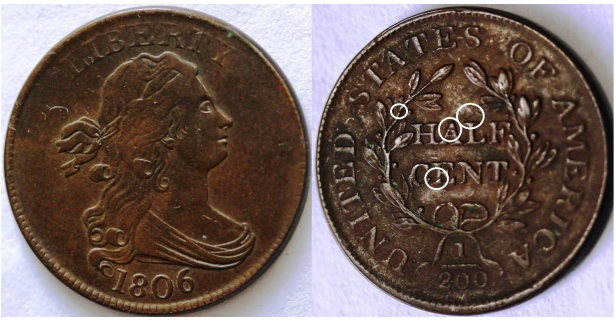
November 2017 Internet example #8/9 (owned by author)
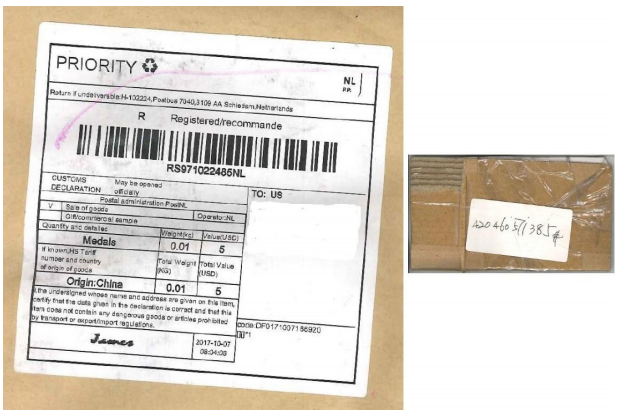
Shipping info
1-Page attribution guide follows:
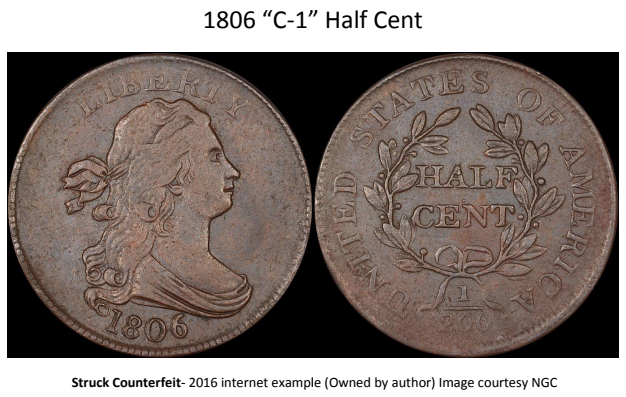


I took the liberty of adding a “wanted poster” that my good friend and fellow EAC’er Mark K. developed for this “variety”:
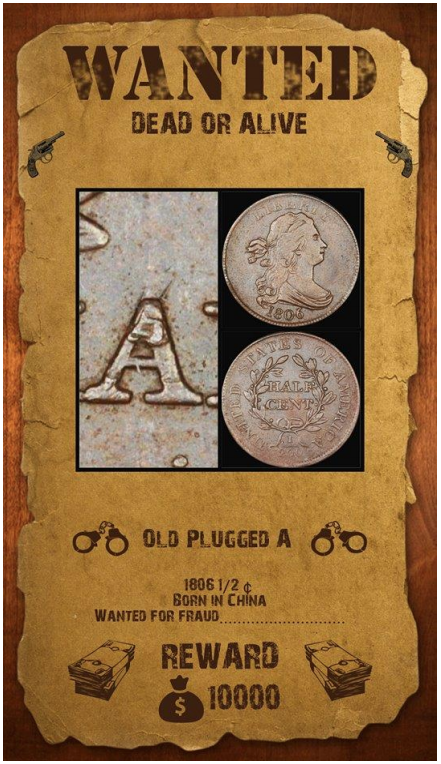
* * *
More research articles/attribution pages are in progress; the focused team of watchers/researchers in our Facebook “Dark Side” group continues to be vigilant in the documentation and communication of these latest deceptive threats to our hobby! We can all draw our own conclusions about what is real and what is “Memorex”, but I am
convinced that more than one of these is counterfeit! I would ask that the reader be on the look-out for other duplicate examples and REPORT them; remember, the truth is out there!
As always, the research continues to be a collaborative effort with many EAC members and friends participating.
Best regards,
—Jack D. Young, EAC 5050
NGC-Certified United States Half Cent Copper Coins Currently Available on eBay
[wpebayads]





Just had my second example certified EF45 by a major TPG; these examples are good.
How would you determine if a coin is a clone if you are not able to locate additional clones or a source coin? I have an 1806 half cent that I have tried to determine if it is a counterfeit or not but is an unknown die pair. I don’t see any plugged portions (i.e. A in HALF) etc. so I don’t think it is the same 1806 obverse. The weight is correct (5.44 Gm). It is solid copper. It is a struck coin. I does have natural pitting (that doesn’t look like it was copied from a host coin) and doesn’t look intentionally worn. Returned by PCGS as questionable authenticity but has too many unexplained characteristics that suggest it may be genuine. Any interest in taking a closer look? Thanks.
I would Bill- do you have good images I could see?